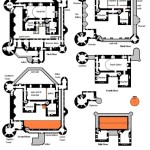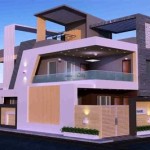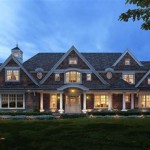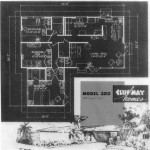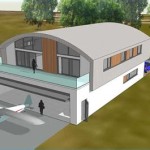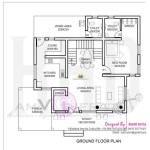Smart House Plans: Essential Elements for the Future of Living
In today's digital age, the concept of smart homes has become a reality. A smart house is a dwelling equipped with intelligent devices and systems that automate tasks, enhance comfort, and improve energy efficiency. Creating a smart home starts with meticulous planning, and smart house plans are essential blueprints for designing a home that meets these modern needs.
Integration and Compatibility
A fundamental aspect of smart house plans is the seamless integration of devices and systems. Smart homes comprise various devices, including lighting, appliances, security systems, and entertainment systems. Ensuring compatibility between these devices is crucial for a cohesive and efficient smart home. A well-planned smart house plan outlines the specific communication protocols, standards, and platforms that will be used for device integration.
Automated Processes
Automation is a hallmark of smart homes. Smart house plans define the specific tasks that will be automated, such as turning on lights based on motion detection, adjusting heating and cooling based on temperature sensors, or locking doors automatically. This automation not only provides convenience but also enhances energy efficiency and security.
Remote Control and Monitoring
Smart homes empower residents with remote control and monitoring capabilities. Smart house plans include provisions for remote access to home systems through smartphones, tablets, or computers. This allows homeowners to manage their home remotely, from adjusting thermostat settings to monitoring security cameras, providing peace of mind and flexibility.
Energy Efficiency
Energy efficiency is a key consideration in smart house plans. Intelligent devices can track energy consumption, identify inefficiencies, and automatically adjust settings to optimize energy usage. Smart thermostats, for example, learn occupant patterns and adjust temperatures accordingly, reducing energy waste. Smart house plans incorporate these energy-saving features to create eco-friendly and cost-effective homes.
Security and Safety
Smart homes enhance security and safety. Smart house plans include provisions for advanced security systems that use sensors, cameras, and access control devices. These systems can detect intrusion attempts, alert homeowners, and provide remote monitoring. Smoke and carbon monoxide detectors can also be integrated into the smart home system, providing early warning and enhanced safety.
Customization and Scalability
Smart house plans should allow for customization and scalability. Different homeowners have unique needs and preferences, and their smart homes should reflect that. Smart house plans provide the flexibility to tailor the system to specific requirements, including adding or removing devices as needed. The plan should also consider potential future upgrades and expansions to accommodate evolving technologies and lifestyle changes.
Conclusion
Smart house plans are essential blueprints for designing homes that embrace the latest technologies and enhance the quality of living. By integrating devices, automating processes, providing remote control, optimizing energy efficiency, improving security, and allowing for customization and scalability, smart house plans create homes that are intelligent, convenient, secure, and sustainable. As technology continues to advance, smart house plans will evolve to meet the ever-changing needs of homeowners, shaping the future of living in the digital age.

Home Automation Iot Smart House Plans Design Floor

Smart Living Home Designs

Open Floor Plans Build A Home With Smart Layout Blog Dreamhomesource Com

Smart Home Design Programs Plans

Smart Homes The Wisdom Home Design Floor Plans Building House Designs

How To Find Floor Plans For A Smart House In 2024

Smart Living Home Designs

Smart Home 2024 Floor Plan Tour The In Pittsburgh

Modern Dwelling House Plans Home Designs Floor

Smart Home 2024 Floor Plan

